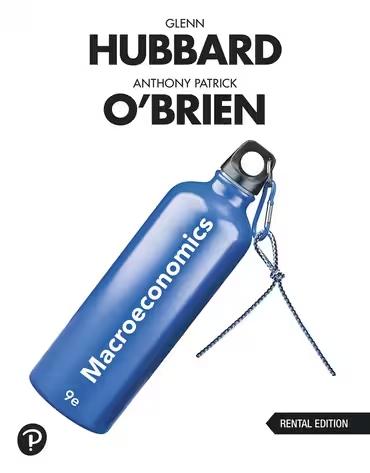Question
Countries A and B produce two goods (Y and X) subject to the following Production Possibilities Curves (PPCs): A: Y = 600 - 1.5X, B:
- Countries A and B produce two goods (Y and X) subject to the following Production Possibilities Curves (PPCs): A: Y = 600 - 1.5X, B: Y = 500 - X
(a) Graph the PPCs and determine which country has a comparative advantage in Y and which one in X.
(b) Initially, A produces 300 Y and 200 X. Initially, B produces 250 Y and 250 X. Initially, how much total Y and X the two countries produce?
(c) Allow the countries to completely specialize according to their comparative advantages. After complete specialization, how much total Y and X the two countries can produce?
(d) Consider the following trade: A exports 270 Y to B and imports from B 220 X. After trade, how much total Y and X the two countries will enjoy?
2. Your individual demand function is P = 30 - 2Q.
(a) Compute Total Expenditures or Outlays (TE), Total Utility (TU), and Consumer Surplus (CS) at the market price of PM= 17.
(b) For rationing purposes (imposed by the government), you have to purchase Q = 5 at the market price of PM= 17. Compute Total Expenditures or Outlays (TE), Total Utility (TU), and Consumer Surplus (CS).
(c) For some reason, you need to purchase Q = 10 at the market price of PM= 17. Compute Total Expenditures or Outlays (TE), Total Utility (TU), and Consumer Surplus (CS).
3. Your individual supply function is P = 10 + 1.5Q. Your capacity Q is QC= 80.
(a) Compute Total Revenue (TR), Total Cost (TC), and Profit () at the market price of PM= 50. (b) Compute Total Revenue (TR), Total Cost (TC), and Profit () at the market price of PM= 130. (c) Compute Total Revenue (TR), Total Cost (TC), and Profit () at the market price of PM= 140.
4. The market demand (D) and supply (S) for product X are D: P = 70 - 2Q and S: P = 15 + 1.5Q.
(a) Compute the market equilibrium (e) quantity and price and then graph D and S in the same diagram. In turn, compute NB(e) that is Net Benefits at Qe.
(b) Let Q = 10. Compute NB(10) and show that NB(e) exceed NB(10). (c) Let Q = 20. Compute NB(20) and show that NB(e) exceed NB(20).
Step by Step Solution
There are 3 Steps involved in it
Step: 1

Get Instant Access with AI-Powered Solutions
See step-by-step solutions with expert insights and AI powered tools for academic success
Step: 2

Step: 3

Ace Your Homework with AI
Get the answers you need in no time with our AI-driven, step-by-step assistance
Get Started


